On Time and Process
A series of clocks, or other ways to tell time
Sep 15, 2022 – by Ruth
A few weeks ago, I worked on a clock face design for The Correct Time, an ongoing exhibit at the Design Museum of Chicago. The show is an exploration of time and time-telling — what it is, was, and could be — and is part of an effort to complete an art piece by Barbara Koenen that aims to gather 720 broken clocks, enough to represent all the minutes in a day.
As part of the exhibit, 24 designers were asked to each interpret an hour of the day through the design of a clock face. My hour was 4 a.m., and the parameters for the assignment were simple — each design would be cut from a 20” wide black vinyl circle. Beyond that, the prompt was to illustrate your hour however you liked.

ON PROCESS
I love the first phase of a project — ideation, brainstorming, lots of half-formed ideas everywhere, running into each other. The jumble of it all is a thrill, because it’s fast. If each product in the early stages is only a test, an experiment, it’s easier to get past any paralyzing ties to perfectionism, and just generate.


Soft Clocks
So, where to start? Maybe with a definition: Merriam-Webster defines a clock, broadly, as “a periodic system by which time is measured.” Other definitions substitute a “periodic system” for an instrument or a mechanical device. This makes it sound very precise, which it can be, but what about vague, mutable clocks?
The biological clock is “an inherent timing mechanism in a living system that is inferred to exist in order to explain the timing or periodicity of various behaviors and physiological states and processes.” That’s a hefty description that raises an interesting idea about time and precision. What is precision anyway — precise to what? If clocks were just people, telling each other the time, over and over again, there’s a clockwork there that is precise to us, and less to a hard system of carefully divvied up time. Isn’t that worth holding onto?
Another way to begin: some spotty digging into history. Going back in time, how have we measured its passing? Often, it seems to have involved our perception of how a material changes from moment to moment, like light, or sand, or water, or wax. All we did was observe, measure, until the cycles were evident, and now our clocks are so accurate that they not only tell time, but help place us in space.
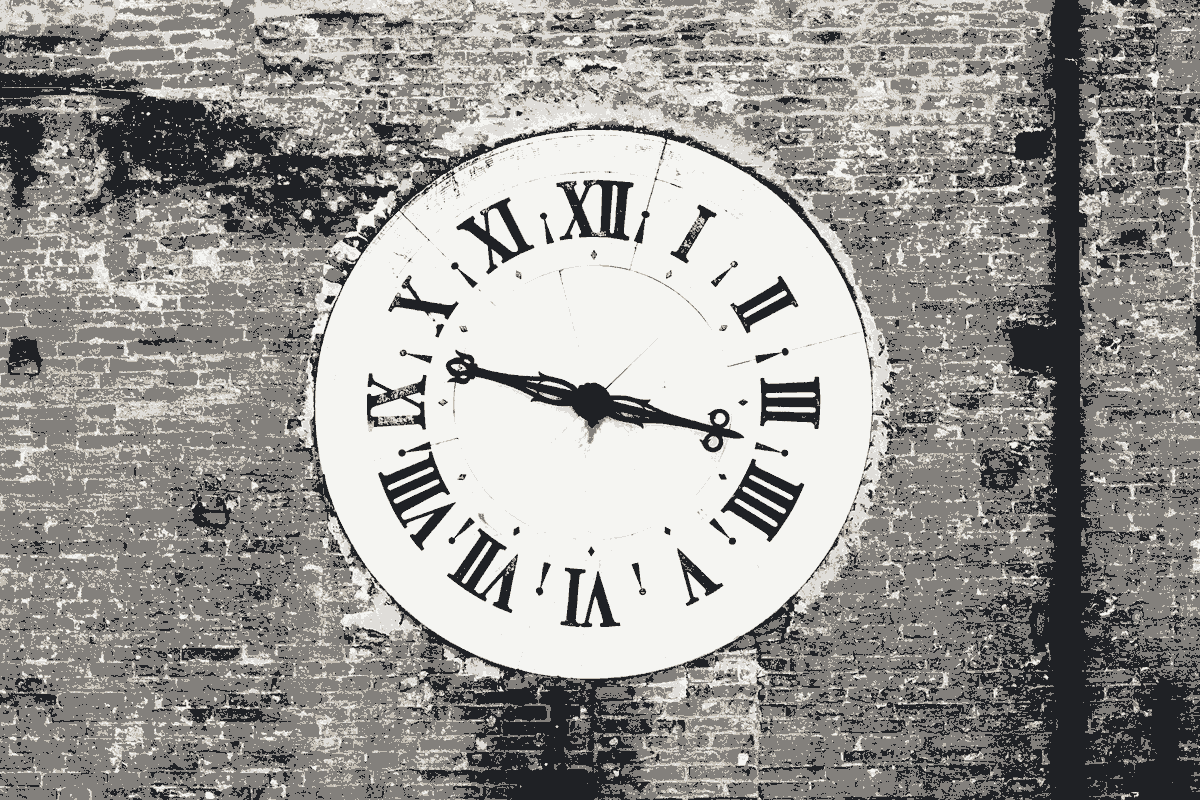
But maybe we come back to this. Otherwise, how else can you tell time? By hour, by second, by fractions of a day, by the way light fades, or memory; by rocks, by counting, by hunger, by listlessness, by using markers — a person, an organ, a salad — or by layers, of one thing dependent on another, or by presence, by loss, by how long an apple takes to decay.
TWO HANDS AND A FACE
The classic analog clock has regular marks and two hands, twelve divisions (or not), a central point. Cogs, circles, centers, cycles. Any of these common parts don’t have to be what they are, can shift slightly to modify meaning.
Slide the center point over, and what could that mean, why was it there, and what does it say now that it’s offset?

I was excited about the idea of tick marks as marks of time, and what else marks time, ticking? So many things look similar. Tick, tick, tallies on a wall to indicate the passing of days, tic-tac-toe to pass the time, ladder stitches, one per second, dashed lines that speak to past or future motion, marks to indicate where to cut, but also measuring distance, difference, in volume, time as a volume, volume as sound, guiding lines on a road that stretches only onward.
I kept thinking of arrows too, pointing inward, to reflect the kind of caving personal reflection that happens at this hour. There’s a gravitational pull inwards, and thoughts seem to loop. We just fall into ourselves, over and over again, an endless black hole where time is suspended.
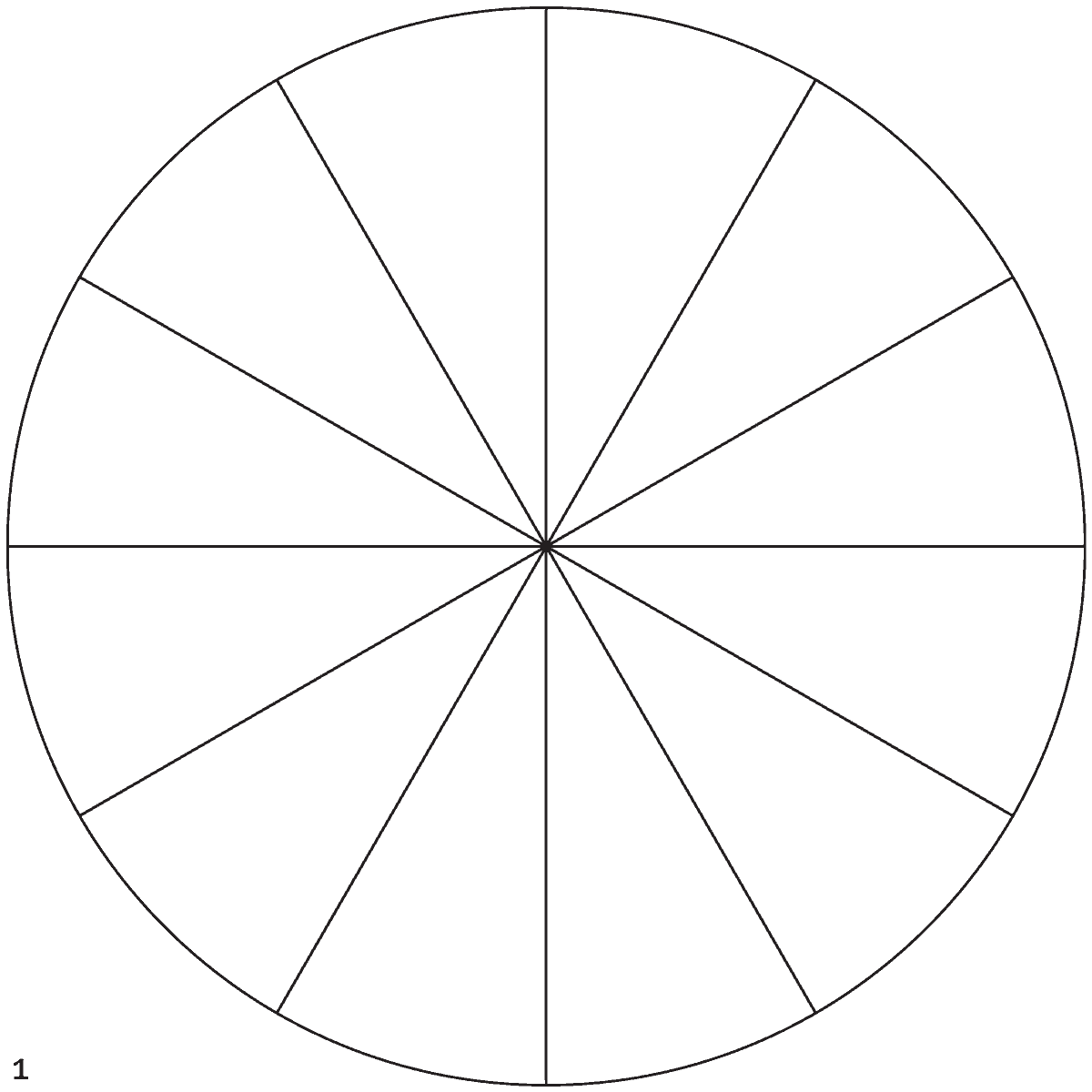
SO MANY WAYS TO BE A CLOCK
So lots of possibilities, but how to distill them? I had plenty of sketches at this point, but not much in the way of forms. Keeping the above ideas in mind, I picked one and started testing ideas out on a screen.

For some of these clocks, the concept felt like it could work, but the execution was off. Other times, I liked the visual result, but the idea was beginning to feel distant from the feeling of 4 a.m., and I wanted to pin that down. Occasionally it felt like a concept worked better in a different medium — maybe useful for something else, some other time.
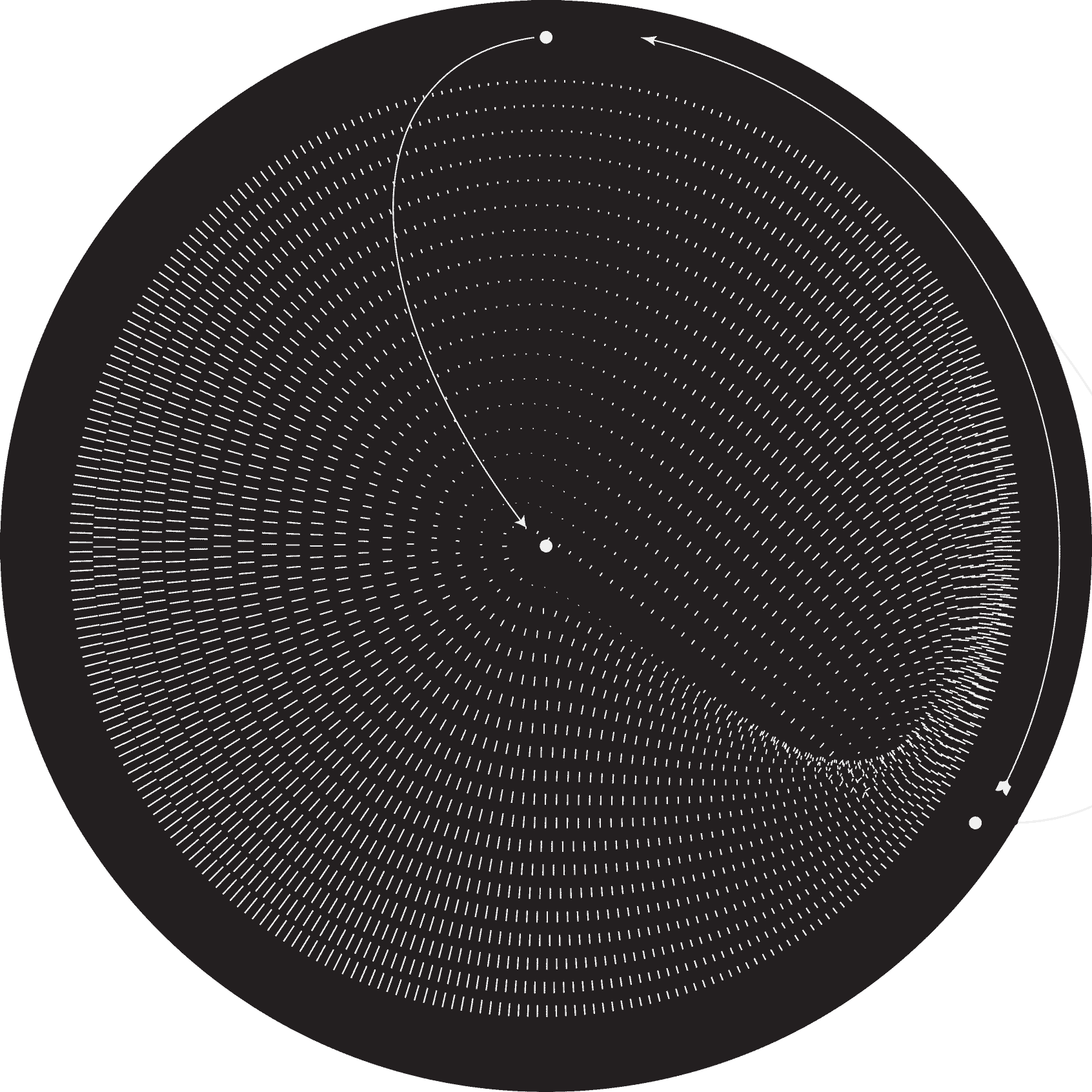
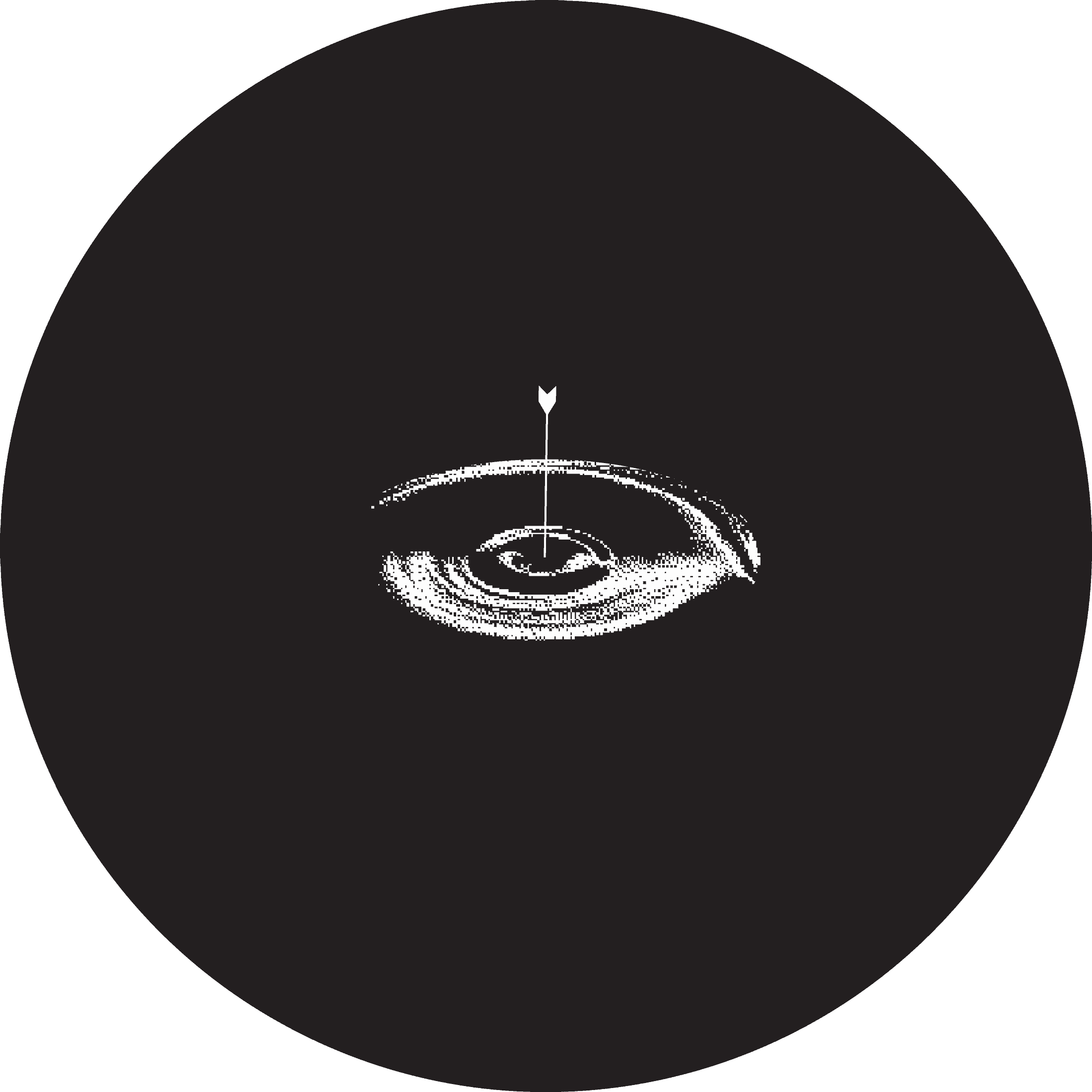



When the concept and visual result aligned, I clumped them together, pulled them aside for reviewing later.
What if it’s Pac-Man, gobbling up the seconds as it goes, ticking by at a frame-rate reminiscent of 80s arcade games? Aren’t all of us gobbling little dots all the time, running from ghosts and occasionally eating them, chomping away at the big picture of our lives?


Or what if time is a vase? A clock as a vessel that holds time, and it’s been such a thing before, with time as running sand or water. What if clocks are physical manifestations of time, needing a stopper to be stopped, and punching holes into the vessel makes it flow faster? Maybe the vessel shapes time, or time has volume, changing in size across space.

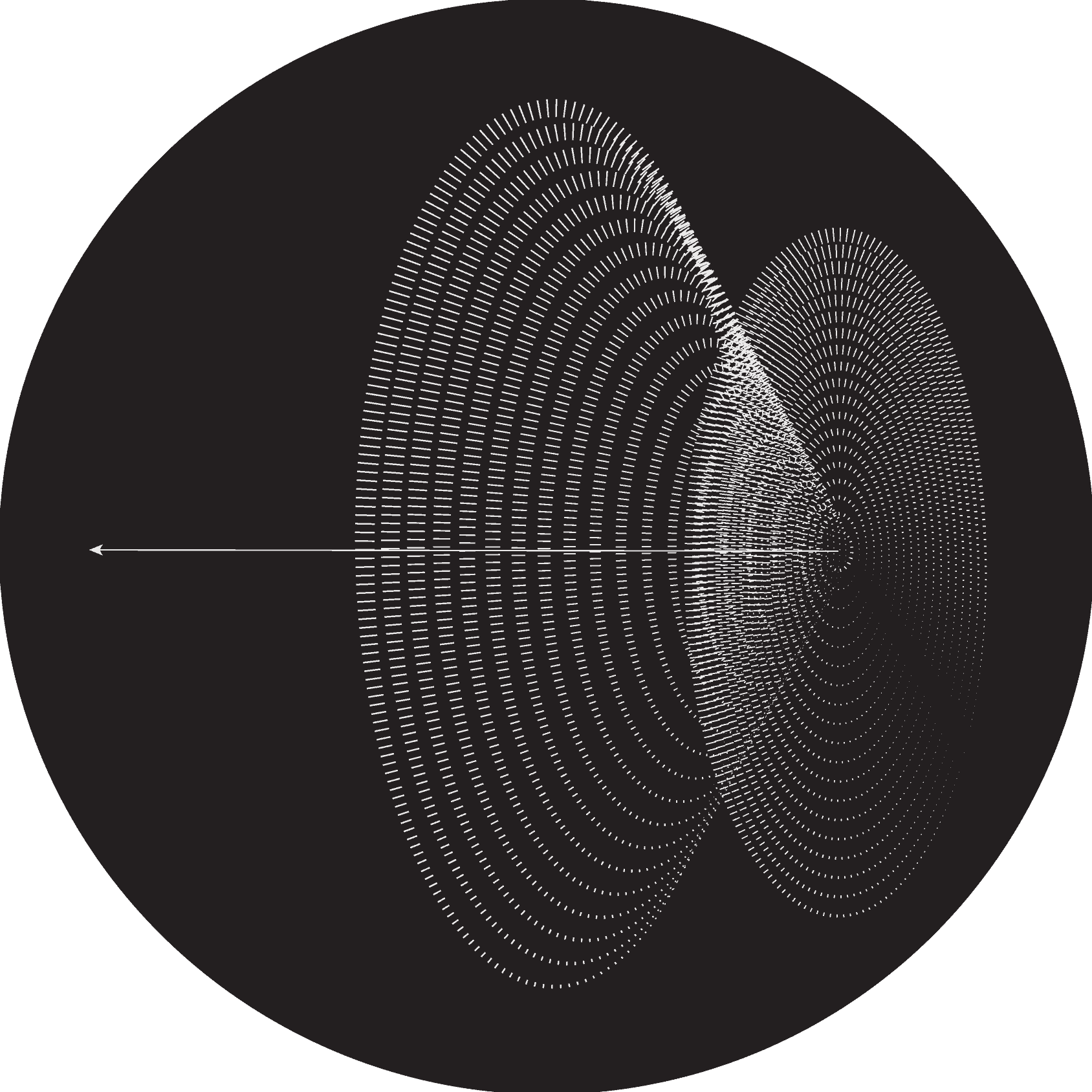
Through this I kept returning to the idea of tick marks, and stars and nighttime, and don’t they go together? When you take a long exposure of the night sky, the stars trail around a center point, revealing our axis. I wanted to find a way to fold together these ideas with some of the ones from before, without overcomplicating or making something impossible to produce.

On Time
At some point things felt like things were coming together. I picked my favorites, iterated off those, and culled through the new variations across multiple rounds.
The final moments were making the last tiny decisions. Which type of arrow, how many tick marks, and were there more small ways to make meaning from this? I tried to simplify the shapes, lower the number of lines, check actual sizes.

Here’s the final clock, followed by some of its past permutations.


There’s always the final thing and its previous little ghosts. A shape builds out of the collection of ideas that came before it. The trial and error of figuring out what the form should be happens in the most forgiving playground, yet there’s the flesh of the process, the most exhilarating part. The end is only the latest iteration, and the road splits infinitely from here. So, where to begin?
on display
Special thanks to Tanner Woodford for the invitation (and for patiently weeding out all the bits of vinyl!), and the volunteers at the Design Museum of Chicago for setting up this exhibition, an amazing feat for the few hands they had! The exhibit is up now — go see all the clocks, and spend some time with them. If you have a broken time piece, consider contributing as well. Happy birthday too — it’s the 10th anniversary of the DMoC!

A FEW DETOURS…
Some fun tidbits that came up during research, for anyone who’s interested:
There is such a thing as a leap second: “Thus, not all minutes contain 60 seconds. A few rare minutes, occurring at a rate of about eight per decade, actually contain 61.“
Clocks scale time down to a comprehensible size in classroom exercises for teaching history: “Why not demonstrate time with time?”
Why are there so many clock emojis?
Learned about salad days.
Geologic time and its lovely terms and diagrams.
⁀➷

